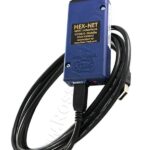Running VCDS software, a vital tool for Volkswagen Audi Group (VAG) vehicle diagnostics, on a Mac presents unique challenges. While natively designed for Windows, several approaches allow Mac users to access this essential software. This article explores various options, including Boot Camp, virtualization software like Parallels or VMware, and Wine compatibility layers. We’ll delve into the benefits and drawbacks of each method, considering factors like performance, cost, and ease of use.
Exploring VCDS Compatibility Solutions for Mac
Users often seek a seamless experience when running Windows-specific software on their Macs. Let’s examine the common solutions for running VCDS on macOS:
Boot Camp: Native Windows Performance
For Intel-based Macs, Boot Camp offers the most robust performance by installing a separate Windows partition. This allows users to boot directly into Windows, providing native hardware access and optimal performance for VCDS. However, Boot Camp requires partitioning the hard drive, dedicating space solely for Windows, and restarting the computer to switch between operating systems. This method is not available for newer Macs with Apple silicon.
Virtualization Software: Parallels and VMware
Virtualization software like Parallels Desktop and VMware Fusion provides a more flexible approach. These applications create a virtual Windows environment within macOS, allowing users to run VCDS without rebooting. While generally offering good performance, virtualization can consume significant system resources, potentially impacting overall Mac performance. Licensing costs for these applications also need to be considered.
Wine Compatibility Layer: A Free Alternative
Wine, a free and open-source compatibility layer, aims to translate Windows API calls to POSIX calls, allowing some Windows applications to run directly on macOS. However, Wine compatibility can be unpredictable, and VCDS functionality may be limited or unstable. Success with Wine often depends on specific VCDS versions and macOS configurations. While free, it may require technical expertise to troubleshoot potential issues.
Considerations for Choosing the Right Solution
Selecting the optimal method for running VCDS on a Mac hinges on several factors:
- Hardware: Boot Camp is limited to Intel-based Macs. Apple silicon users must rely on virtualization or Wine.
- Performance Needs: Boot Camp offers the best performance, followed by virtualization. Wine performance can vary significantly.
- Budget: Boot Camp is free (requiring a Windows license), while virtualization software involves licensing costs. Wine is free but may require time investment for troubleshooting.
- Technical Proficiency: Boot Camp and virtualization are relatively user-friendly. Wine may demand more technical knowledge.
Conclusion: Finding the Best Fit for Your Needs
Running VCDS software on a Mac presents challenges, but viable solutions exist. Boot Camp provides the best performance for Intel-based Macs, while virtualization offers a flexible approach for both Intel and Apple silicon. Wine presents a free option but may require technical expertise and offer less stable performance. Carefully weigh your hardware, performance needs, budget, and technical skills to determine the most suitable solution for accessing VCDS functionality on your Mac.

